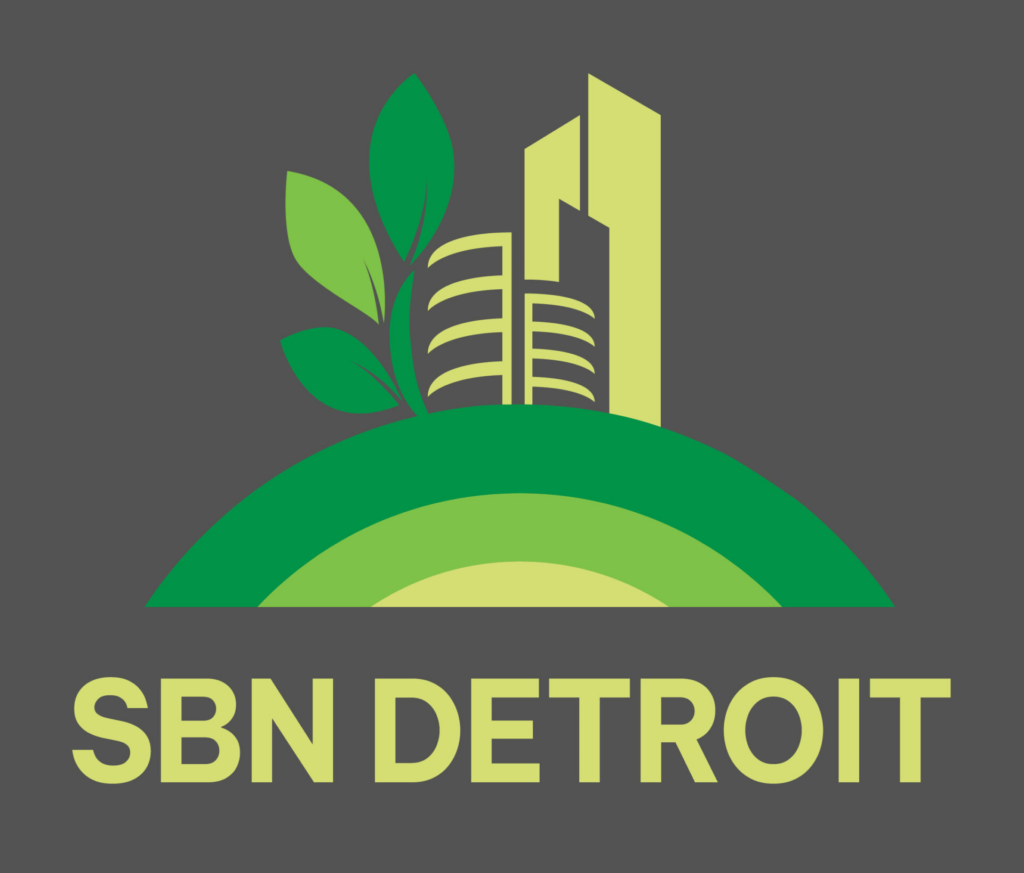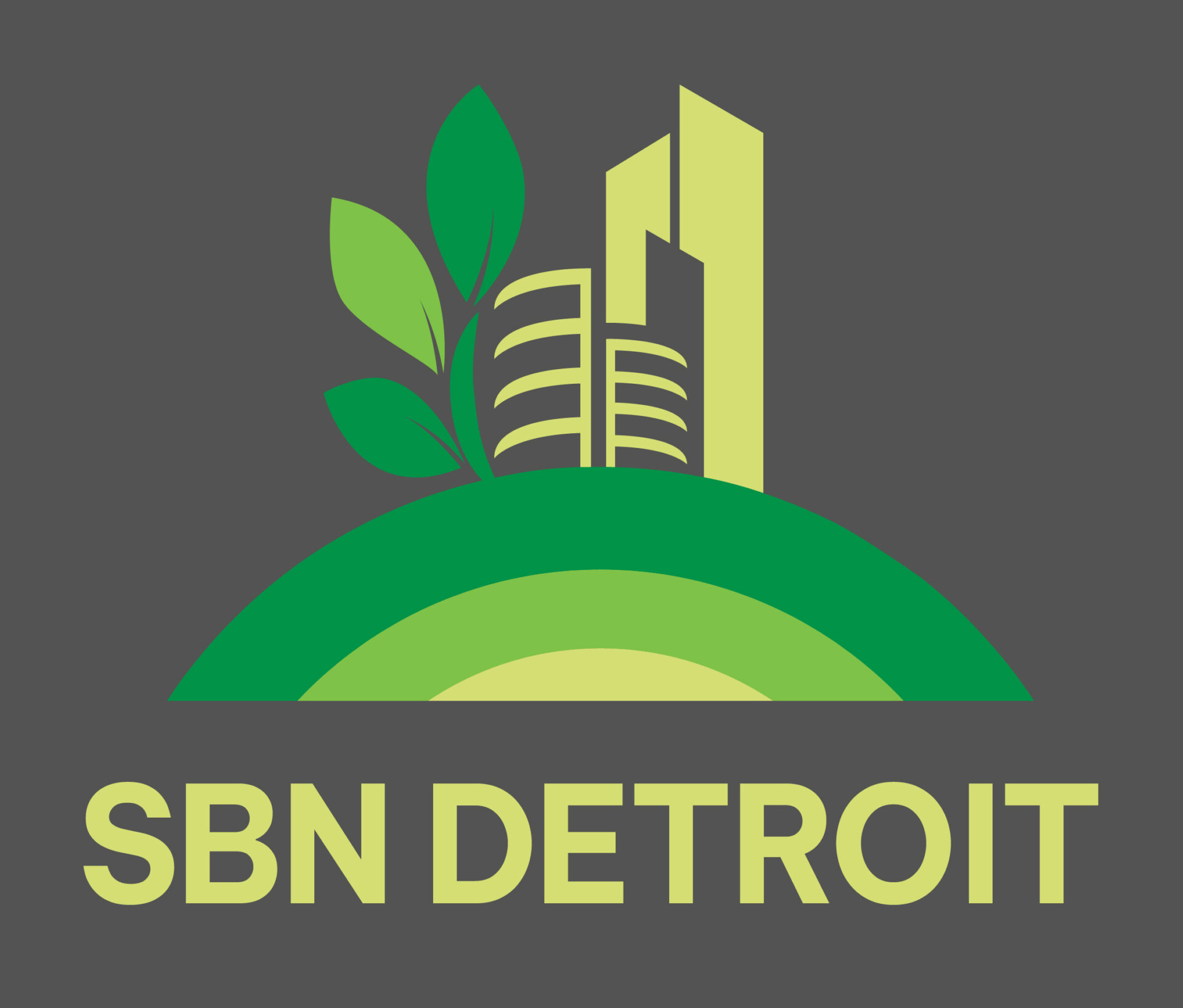Sustainability in Civil Engineering: Challenges, Innovations, and the Future

Spalding DeDecker is a Rochester, Hills-Michigan-based civil engineering and surveying firm specializing in infrastructure and land development, land surveying, landscape architecture, and urban planning. With decades of experience, the company has contributed to a wide range of projects, including transportation networks, private and public developments, and municipal services, balancing engineering excellence with evolving industry demands. SBN Detroit interviewed Tricia DeMarco, Director of Urban Design and Sustainability, and Bob Ford, Lead Landscape Architecture at Spalding DeDecker, to discuss the role of sustainability within their projects, as well as the challenges and opportunities of implementing eco-conscious infrastructure and design in Southeast Michigan. Q: How does Spalding DeDecker approach sustainability, and what methodologies or processes are you focused on? DeMarco: Spalding DeDecker has been around for 70 years, and like any forward-thinking company, we continually seek opportunities to evolve. Over the past five years, we’ve expanded our services to include urban planning and landscape architecture. This multidisciplinary approach is now essential for competing in sustainable projects. By integrating these disciplines, we ensure sustainability is considered holistically at every stage of development, rather than as an afterthought. Q: What are the biggest sustainability challenges the civil engineering and landscape architecture industries face today, particularly in infrastructure development and land surveying? DeMarco: Public funding and prioritization remain some of the biggest hurdles. Market conditions and regulatory approvals also pose significant barriers to innovation and development. Some of the most promising, forward-thinking projects stall or never come to fruition due to these constraints. Ford: In urban environments, implementing sustainability measures—such as water detention systems—offers clear environmental benefits. These solutions cleanse stormwater before it enters drainage systems, mitigate flooding, and improve water quality. However, they also require land and space which can be costly. Emerging technologies are helping to submerge these systems beneath parking lots and other developed areas, but they add significant costs that not all projects can absorb. Q: What are the specific sustainability challenges in Southeast Michigan? DeMarco: Having worked in multiple states, I’ve seen that one of Southeast Michigan’s biggest challenges is stormwater retention. Many areas, particularly in Detroit, have non-infiltrating soils, which means that even when regulations require on-site stormwater retention, the land itself can’t accommodate it. Contaminated urban soils further complicate stormwater solutions. Ford: That’s exactly right. Many of the soils in this region are heavy clay, which doesn’t allow for effective water infiltration. Additionally, in urban areas, we often encounter layers of fill material left from demolished buildings, which can create further challenges. If a site wasn’t properly backfilled or if remnants of previous structures remain, it adds complexity and cost to development. Q: Conversely, are there any specific opportunities in urban planning, infrastructure, and site design in Southeast Michigan? DeMarco: One of the greatest opportunities in Detroit and Southeast Michigan is the availability of land. While vacant land presents its own challenges, it also allows us to think creatively and implement solutions that wouldn’t be possible in more densely developed cities. Another opportunity lies in rethinking roadways. Rather than automatically widening roads, we can evaluate the entire right-of-way and explore alternative uses. Community engagement is also a significant advantage here—many projects are directly shaped by input from local residents and stakeholders, which isn’t always the case in other regions. Ford: In downtown Detroit, there has been a great deal of innovation surrounding stormwater runoff management, including drainage credit incentives for sustainable stormwater solutions. These regulatory challenges have actually fueled creative approaches and encouraged developers and engineers to think differently. Q: How does Spalding DeDecker integrate sustainable practices into projects like the Detroit Zoo? Can you share specific strategies or innovations that have made a measurable impact? DeMarco: The Detroit Zoo project provided an opportunity to approach sustainability from a much broader perspective than is typical in most projects. One of the key focuses was stormwater management. Instead of viewing stormwater as a nuisance, we considered it a valuable resource. Through the Zoo’s Discovery Trail project, we designed a system that captures and can be used in the future to repurpose stormwater for practical uses such as flushing toilets and irrigation. By treating stormwater as an asset rather than a problem, we were able to create a more sustainable and efficient solution. Pursuing SITEs Certification on this project also encouraged us to think creatively about preserving existing soil composition and protection of the underlying mycelium networks which, as an industry, we are gaining an increasing understanding of the importance of leaving these site elements undisturbed. Q: When it comes to private and public development projects, how do you balance environmental responsibility with economic feasibility? DeMarco: Environmental responsibility and economic feasibility go hand in hand. At its core, sustainability is about managing the tension between the two. One of the most cost-effective approaches is leveraging the existing natural systems of a site rather than working against them. Respecting and integrating these systems can lead to both economic and environmental benefits. Ford: There’s always a balance to strike. Incorporating sustainability measures often requires an upfront investment, but there are ways to offset costs. Recycling materials—such as using crushed concrete as base material—can reduce expenses while maintaining structural integrity. We also prioritize stormwater infiltration where possible, using green infrastructure to not only manage water but also enhance aesthetics. Trees and green spaces don’t just help with stormwater; they reduce the heat island effect, improve air quality, and enhance the pedestrian experience. Q: What are the biggest barriers to incorporating sustainable practices into large-scale projects? DeMarco: The biggest barrier is the status quo. It’s far easier to do things the way they’ve always been done. True sustainability requires stepping back, understanding the unique context of a project, and identifying site-specific opportunities. Ford: Absolutely. Regulations often dictate project design based on traditional methodologies, limiting the ability to explore more sustainable alternatives. That’s why it’s crucial to involve clients and regulatory agencies early in the planning process to explore new approaches before a project becomes locked into a conventional path. Q: How is climate change
A Look at Sustainable Architecture with Quinn Evans

Quinn Evans is a nationally recognized architecture and design firm specializing in historic preservation, adaptive reuse, and sustainable building strategies. With a strong commitment to reducing environmental impact, the firm prioritizes decarbonization through the reuse of existing structures, energy-efficient design, and innovative material solutions. An example of this is the firm’s leadership in restoring Detroit’s historic Michigan Central Station. In collaboration with Ford Motor Co., Quinn Evans assembled a multidisciplinary team of architects, engineers, historians, and conservation specialists to rehabilitate the long-abandoned landmark. SBN Detroit interviewed Senior Associate Angela Wyrembelski to explore the challenges and opportunities of decarbonizing buildings, the role of adaptive reuse in reducing embodied carbon, and the latest tools and technologies shaping the future of sustainable architecture. Q: Walk us through how Quinn Evans approaches decarbonization in building design and renovation. A: At the core of our approach is valuing what already exists. Reusing and adapting existing structures is our first line of defense against excessive carbon emissions. New construction comes with an enormous carbon cost, from material extraction to manufacturing and transportation. By preserving and repurposing buildings, we significantly reduce that impact while maintaining the historical and cultural integrity of structures that communities value. Beyond preservation, we focus on making buildings high-performing through energy-efficient systems and renewable energy integration. We also consider material selection – prioritizing low-carbon materials and renewable resources – to minimize environmental impact. These layers work together to create buildings that are both sustainable and adaptable for the future. Q: What are the most significant contributors to carbon emissions in architecture and development? A: The structure itself is by far the biggest contributor. Building materials such as steel and concrete account for nearly 50% of a structure’s carbon footprint. Concrete, in particular, is incredibly carbon-intensive. Q: What strategies can be implemented to counteract these carbon contributors? A: We prioritize material selection. Low-carbon concrete is gaining traction… there are manufacturers working with different mixes that are much better for the environment. We also advocate for retaining as much of a structure as possible to minimize the need for new materials. Additionally, we use Environmental Product Declarations (EPDs) to ensure transparency in material selection and work closely with manufacturers that provide sustainable options. It’s a holistic approach that combines design, technology, and materials to drive lower carbon outcomes. Q: What are the biggest challenges in designing and executing low-carbon projects? A: One of the biggest challenges is cost perception. Energy-efficient upgrades are often easier to justify because they lead to lower utility bills. However, the financial return on low-carbon materials isn’t always as direct. Convincing clients to invest in sustainable materials that may have a higher upfront cost but a longer-term environmental benefit can be difficult. Q: How does adaptive reuse contribute to sustainability? A: Adaptive reuse is one of the most impactful sustainability strategies. Embodied carbon in new buildings can be equivalent to operating a building for 10 to 50 years. The construction phase—material extraction, manufacturing, transportation, and installation—is highly energy-intensive. By contrast, when we reuse a structure, much of the material is already on-site, eliminating those initial carbon expenditures. This is why we advocate for renovation and repurposing over demolition and new construction whenever possible. How does your work in Detroit compare to other markets in terms of sustainable development? A: Michigan lags behind some coastal states in energy codes and sustainable requirements. Cities on the East Coast, for example, have stringent energy mandates that compel developers to meet higher efficiency standards. In Michigan, we often have to educate clients on the benefits of going beyond minimum code requirements. That said, there is a strong culture of stewardship in Michigan. Legacy institutions within the auto industry, churches, and universities have deep-rooted histories, and many of these organizations recognize the value of long-term sustainability. Our role is to help them integrate sustainability into their projects in ways that align with their mission and values. Q: Quinn Evans played a major role in the Michigan Central revitalization. What sustainable strategies were implemented, and what lessons can be applied to future renovations? A: This was an incredibly rewarding project. The first step was assessing what could be saved. The building had been abandoned for over 30 years, yet it still had incredible architectural details that we wanted to preserve. We focused on retaining as much of the original materials as possible, aligning with the embodied carbon narrative. Another key aspect was optimizing the building’s performance and envelope. We used advanced modeling software to analyze thermal performance, airflow, and ventilation. This helped us right-size insulation and mechanical systems to enhance efficiency while preserving historic integrity. For example, our studies showed that adding insulation to the upper brick portion of the building would improve performance, but doing the same to the limestone base would trap moisture and accelerate deterioration. These findings guided our approach, ensuring sustainability without compromising the building’s long-term health. Q: What new digital tools are helping architects track and optimize carbon savings? A: We use a variety of tools, including Tally and EC3, to analyze material selections and their carbon impact. For whole-building carbon analysis, we use C-Scale (EPIC) and the CARE Tool, which help compare carbon emissions from new versus renovated buildings. These technologies allow us to make data-driven decisions that prioritize sustainability from the outset. Q: What are some of the most promising sustainable materials currently being developed? A: There’s been significant progress in repurposing waste materials. We’re seeing recycled glass being used in place of gravel and construction waste being reintegrated into new builds. At Michigan Central, historic materials that were unable to be reinstalled were reused in creative ways. Stone cladding from the station’s columns was repurposed within the counters of the café, and marble was incorporated into the landscape as accent features. Finding innovative ways to repurpose materials keeps them out of landfills and adds unique character to a project. Q: Looking ahead, where do you see sustainable architecture evolving in the next five to ten years? A: There


